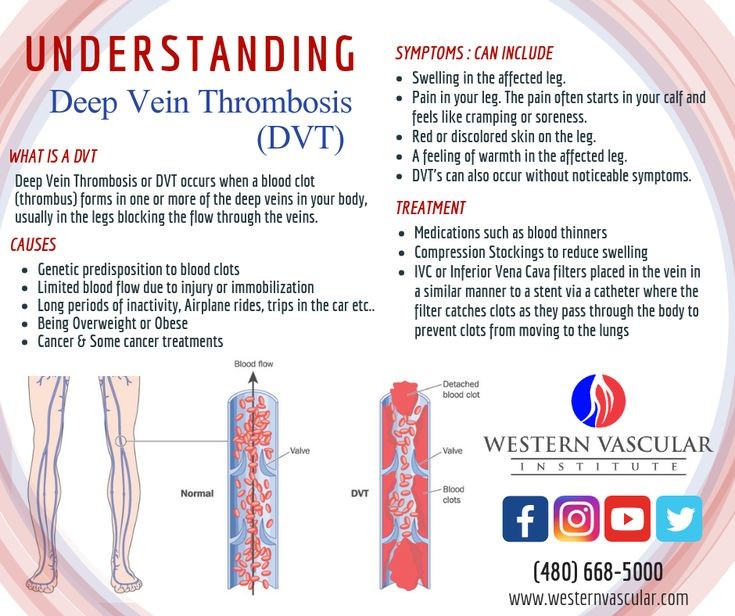Symptoms of a blood clot in calf muscle. Deep Vein Thrombosis (DVT): Symptoms, Causes, and Prevention
What are the symptoms of deep vein thrombosis. How is DVT diagnosed. What are the risk factors for developing a blood clot in the calf muscle. How can travelers prevent DVT during long journeys.
Understanding Deep Vein Thrombosis (DVT)
Deep Vein Thrombosis (DVT) is a serious medical condition characterized by the formation of a blood clot in a deep vein, most commonly occurring in the calf muscle area. This potentially life-threatening condition requires immediate medical attention and proper treatment to prevent complications such as pulmonary embolism.
What causes Deep Vein Thrombosis?
DVT can occur due to various factors that affect blood circulation and clotting. Some common causes include:
- Prolonged immobility (e.g., during long-haul flights or after surgery)
- Changes in air pressure during air travel
- Poor circulation
- Obesity
- Advanced age (over 50 years)
- Recent surgery or trauma
- Certain medical conditions that increase clotting risk
Recognizing the Symptoms of DVT
Identifying the symptoms of DVT is crucial for early detection and treatment. The most common signs include:

- Constant pain in the calf muscle
- Deep tenderness within the muscle
- Swelling in the affected area
- Increased skin temperature
- Visible redness on the skin
- Pain when passively stretching the calf muscle
Can DVT symptoms be silent? In some cases, DVT may not present any noticeable symptoms, making it difficult to detect without medical examination. This underscores the importance of regular check-ups, especially for individuals with known risk factors.
Diagnosing Deep Vein Thrombosis
Accurate diagnosis of DVT is essential for proper treatment and prevention of complications. Healthcare professionals use various methods to diagnose DVT:
Wells’ Clinical Prediction Rule
The Wells’ clinical prediction rule is considered one of the most effective tools for diagnosing DVT. This checklist evaluates various risk factors to determine the likelihood of DVT.
How does the Wells’ score work? The test assigns points to different risk factors, such as active cancer, paralysis or recent plaster immobilization of the lower extremities, recent bedridden status, localized tenderness along the distribution of the deep venous system, entire leg swelling, calf swelling, pitting edema, collateral superficial veins, and alternative diagnosis as likely or more likely than DVT. A score of 2 or higher indicates a high probability of DVT.

Imaging Tests
To confirm a DVT diagnosis, doctors may order imaging tests such as:
- Ultrasound: This non-invasive test uses sound waves to visualize blood flow in the veins
- Venography: A contrast dye is injected into the veins to make them visible on X-rays
- CT or MRI scans: These advanced imaging techniques can provide detailed images of the veins and any potential clots
Treatment Options for Deep Vein Thrombosis
Once diagnosed, prompt treatment of DVT is crucial to prevent complications and promote recovery. The primary goals of treatment are to stop the clot from growing, prevent it from breaking loose, and reduce the risk of future clots.
Anticoagulant Therapy
Anticoagulants, also known as blood thinners, are the mainstay of DVT treatment. The typical treatment regimen includes:
- Initial treatment with Heparin: Daily injections for up to a week
- Long-term treatment with Warfarin: Oral medication taken daily for up to 6 months
Why is regular monitoring important during anticoagulant therapy? Regular blood tests are essential to ensure the correct dosage of anticoagulants. Too much medication can increase the risk of bleeding, while too little may allow the clot to grow.

Are there any contraindications for anticoagulant therapy? Warfarin should not be used in pregnant patients as it can cause birth defects. In such cases, alternative treatments may be necessary.
Preventing Deep Vein Thrombosis in Travelers
Travelers, especially those on long journeys, are at an increased risk of developing DVT. This condition, sometimes referred to as “travelers’ thrombosis,” can occur during or after prolonged periods of immobility in various modes of transportation.
Risk Factors for Travelers
Several factors can increase the risk of DVT for travelers:
- Journeys lasting 4 hours or more
- Personal or family history of DVT
- Obesity
- Pregnancy
- Smoking
- Recent surgery or significant trauma
- Use of oral contraceptives
- Age over 50 years
- Sitting in non-aisle seats (due to limited movement)
Preventive Measures for Travelers
To reduce the risk of DVT during travel, consider the following precautions:
- Choose aisle seating when possible
- Stay hydrated throughout the journey
- Walk frequently, especially on long flights
- Wear loose, comfortable clothing
- Perform lower extremity exercises while seated
- Use a footrest if available
- Avoid alcohol and sleeping pills during travel
- Wear properly fitted graded compression stockings (15-30 mm Hg)
Is aspirin effective in preventing DVT during travel? While aspirin is often used for its blood-thinning properties, it has not been proven effective for DVT prevention in travelers. Individuals with clotting disorders or a history of DVT should consult their healthcare provider for personalized prevention strategies.

Complications of Deep Vein Thrombosis
If left untreated or misdiagnosed, DVT can lead to severe complications that may be life-threatening. Understanding these potential risks emphasizes the importance of early detection and proper treatment.
Pulmonary Embolism (PE)
One of the most serious complications of DVT is pulmonary embolism. This occurs when a blood clot breaks free from its original location and travels through the bloodstream to the lungs.
What are the symptoms of pulmonary embolism? PE can manifest with various symptoms, including:
- Sharp chest pain
- Sudden shortness of breath
- Coughing up blood (hemoptysis)
- Rapid heartbeat
- Dizziness or fainting
- In severe cases, cardiac collapse
PE is a medical emergency that requires immediate attention. If you experience any of these symptoms, especially after a long period of immobility or if you have risk factors for DVT, seek medical help immediately.
Post-thrombotic Syndrome (PTS)
Another potential long-term complication of DVT is post-thrombotic syndrome. This condition can develop months or even years after the initial DVT event.
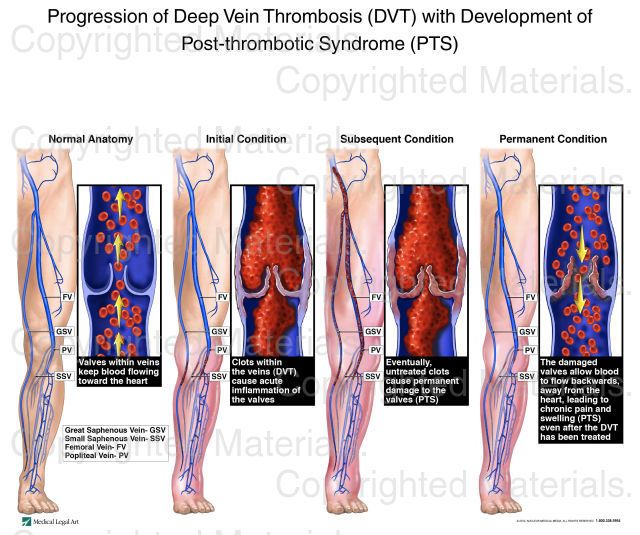
What causes post-thrombotic syndrome? PTS occurs when the affected vein is damaged by the blood clot, leading to chronic problems with blood flow in that area. Symptoms may include:
- Persistent swelling in the affected limb
- Pain or discomfort, especially when standing or walking
- Skin discoloration
- Skin ulcers in severe cases
Proper treatment of DVT and consistent use of compression stockings can help reduce the risk of developing PTS.
Special Considerations for Athletes and Active Individuals
While DVT is often associated with inactivity and older age, it’s important to note that even young, fit athletes can be at risk under certain circumstances. Understanding these risks can help active individuals take appropriate precautions.
DVT Risk in Athletes
Several factors can increase an athlete’s risk of developing DVT:
- Long-distance travel for competitions
- Dehydration during intense training or events
- Injuries that require immobilization (e.g., casts or braces)
- Use of performance-enhancing drugs that may affect blood clotting
How can athletes minimize their DVT risk? Athletes can take several steps to reduce their risk of DVT:
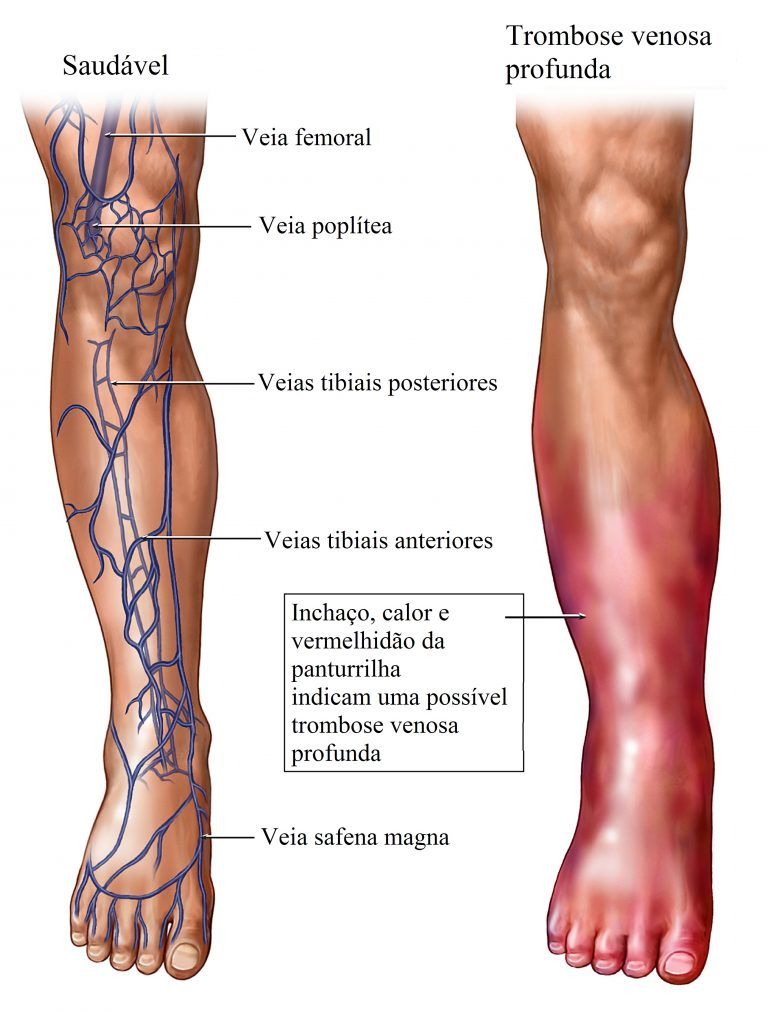
- Stay well-hydrated, especially during long flights or car rides
- Perform simple exercises or walk regularly during travel
- Wear compression garments during long journeys
- Follow proper rehabilitation protocols for injuries
- Be aware of any family history of blood clotting disorders
Distinguishing DVT from Sports Injuries
It’s crucial for athletes and their healthcare providers to differentiate between DVT and common sports injuries, such as calf strains or muscle tears.
Why is correct diagnosis critical? Misdiagnosing DVT as a simple muscle strain can have serious consequences. For example, applying deep tissue massage to an area with DVT could potentially dislodge the clot, leading to life-threatening complications.
If an athlete experiences persistent calf pain, especially if accompanied by swelling or redness, it’s important to consider DVT as a possible cause and seek appropriate medical evaluation.
Advances in DVT Research and Treatment
Medical science continues to make strides in understanding, diagnosing, and treating DVT. These advancements offer hope for improved outcomes and reduced risks for patients.

New Anticoagulant Medications
In recent years, new oral anticoagulants (NOACs) have been developed as alternatives to traditional treatments like warfarin.
What advantages do NOACs offer? These newer medications, such as rivaroxaban, apixaban, and dabigatran, offer several potential benefits:
- More predictable anticoagulant effects
- Fewer food and drug interactions
- No need for regular blood monitoring
- Potentially lower risk of bleeding complications
While these medications show promise, they may not be suitable for all patients. The choice of anticoagulant should be made in consultation with a healthcare provider, taking into account individual risk factors and medical history.
Improved Diagnostic Techniques
Advancements in imaging technology and biomarker testing are enhancing the accuracy and speed of DVT diagnosis.
How are these new techniques improving DVT care? Some notable developments include:
- Point-of-care ultrasound: Allows for rapid bedside assessment of suspected DVT
- D-dimer testing: A blood test that can help rule out DVT in low-risk patients
- Magnetic Resonance Direct Thrombus Imaging (MRDTI): A specialized MRI technique that can directly visualize blood clots
These advances are helping healthcare providers make more accurate diagnoses, potentially reducing the need for invasive tests and improving patient outcomes.

Living with and Beyond DVT
For many individuals, experiencing DVT is not just a one-time medical event but can have long-lasting impacts on their health and lifestyle. Understanding how to manage life after DVT is crucial for maintaining health and preventing recurrence.
Long-term Management
After the initial treatment phase, individuals who have experienced DVT often need to continue certain practices to maintain their health:
- Regular follow-up appointments with healthcare providers
- Continued use of compression stockings
- Lifestyle modifications to reduce risk factors
- Ongoing anticoagulation therapy in some cases
How long should anticoagulation therapy continue? The duration of anticoagulation therapy can vary depending on individual circumstances. Some patients may need to continue treatment for several months, while others with recurrent DVT or certain risk factors may require lifelong therapy. This decision should be made in consultation with a healthcare provider.
Psychological Impact
Experiencing DVT can have significant psychological effects on individuals. Some may develop anxiety about recurrence or experience changes in their quality of life due to ongoing symptoms or treatment requirements.

What support is available for individuals coping with the psychological impact of DVT? Several resources can help:
- Support groups for DVT survivors
- Counseling or therapy to address anxiety or depression
- Patient education programs to better understand and manage the condition
- Regular communication with healthcare providers to address concerns
Addressing both the physical and psychological aspects of DVT is crucial for comprehensive care and improved quality of life.
Future Directions in DVT Research and Prevention
As medical science continues to advance, researchers are exploring new avenues for preventing, diagnosing, and treating DVT. These emerging areas of study hold promise for improving outcomes for individuals at risk of or affected by DVT.
Personalized Risk Assessment
One area of focus is the development of more sophisticated risk assessment tools that can provide personalized DVT risk profiles.
How might personalized risk assessment improve DVT prevention? By incorporating genetic factors, biomarkers, and advanced algorithms, these tools could potentially:

- Identify high-risk individuals more accurately
- Guide tailored prevention strategies
- Inform decisions about prophylactic anticoagulation
- Optimize travel recommendations for at-risk individuals
Novel Therapeutic Approaches
Researchers are also exploring new therapeutic strategies that could offer alternatives or enhancements to current DVT treatments.
What are some promising areas of research in DVT treatment? Emerging areas of study include:
- Gene therapy to modify factors involved in blood clotting
- Nanotechnology-based targeted drug delivery systems
- Development of new anticoagulants with improved safety profiles
- Exploration of natural compounds with anticoagulant properties
While many of these approaches are still in early stages of research, they represent exciting possibilities for the future of DVT prevention and treatment.
In conclusion, Deep Vein Thrombosis remains a significant health concern, particularly for individuals with certain risk factors or those undergoing prolonged periods of immobility. However, with increased awareness, improved diagnostic techniques, and advancing treatment options, the outlook for preventing and managing DVT continues to improve. By staying informed about the symptoms, risk factors, and preventive measures associated with DVT, individuals can take proactive steps to protect their health and well-being.
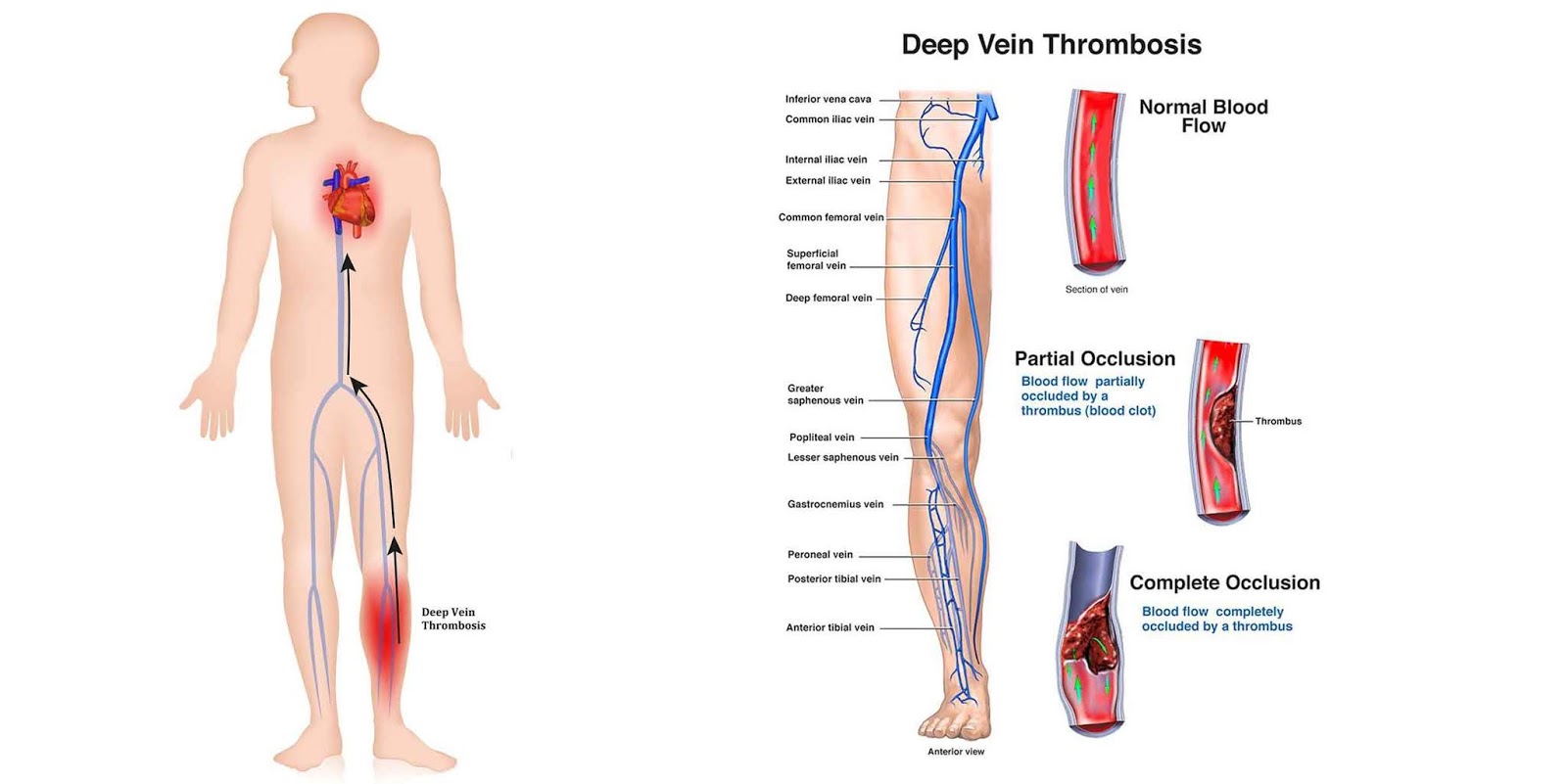
Deep Vein Thrombosis (DVT) – Symptoms, Causes & Treatment
May 9, 2023
Deep Vein Thrombosis or DVT is a blood clot in a vein. It is most common in the calf muscle area, particularly following surgery and long-haul flights. Do not confuse this with a calf strain. Incorrect treatment can cause life-threatening complications.
Advert
DVT symptoms
Deep vein thrombosis symptoms consist of:
- Constant pain, usually in the calf muscle at the back of the lower leg.
- Tenderness deep within the muscle.
- You may have swelling in the calf muscle area.
- Skin temperature may seem hot to the touch.
- Sometimes a red area is visible on the skin.
Pain may be reproduced when passively stretching the calf muscle (you relax the muscle while someone else moves your foot to stretch it.
Advert
Shin & Calf Supports
UPMedical.co.uk (UK)
Amazon.com (USA)
Diagnosis
Wells’ clinical prediction rule is believed to be the best test for the diagnosis of deep vein thrombosis2. It is a checklist of risk factors thought to increase risk. If the patient has more than one out of a potential nine then a DVT is likely.
It is a checklist of risk factors thought to increase risk. If the patient has more than one out of a potential nine then a DVT is likely.
What is Deep vein thrombosis?
Deep Vein Thrombosis (DVT) is a blood clot in a vein. It is most common in the calf muscle area, particularly following surgery, or in those who have had long-haul flights. This is because the patient has been sitting still for long periods, combined with a change in air pressure. It may also develop as a complication of arthroscopic surgery1.
DVT is relatively common, especially in the following:
- Overweight people
- Those over the age of 50
- People who have poor circulation.
It is not something you would expect in young fit athletes. However, the condition is potentially fatal if not recognised. This is because if the blood clot breaks loose it may make its way up the circulatory system to the heart, lungs, or brain. As a result, potentially causes a heart attack, pulmonary embolism, or stroke.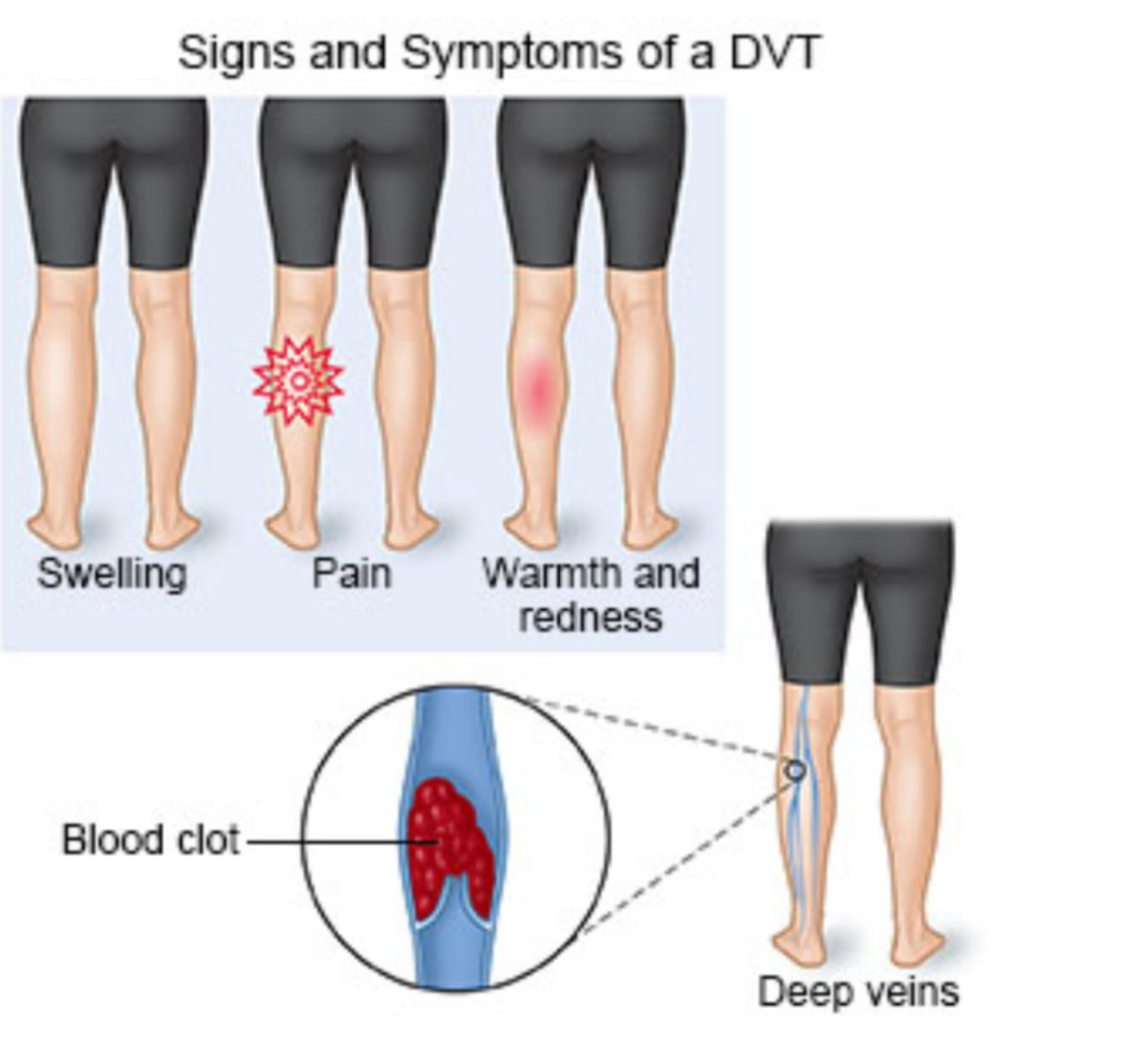
If a massage therapist misses this or misdiagnoses a DVT as a calf strain and applies deep tissue massage to the area then this could work the clot free and cause serious harm or worse.
Treatment
If you suspect a DVT then seek medical attention immediately. See a doctor who can give a professional opinion and refer you for further investigations. A scan will confirm the diagnosis.
Treatment usually involves daily injections of an anticoagulant known as Heparin for up to a week.
This is followed by a second anticoagulant medication called Warfarin, taken in pill form, on a daily basis for up to 6 months.
Your doctor will do regular blood tests to ensure the medication dose is correct. Too much Warfarin increases the risk of bleeding and too little increases the risk of the clot growing.
Important! – Warfarin should not be used in patients who are pregnant as it can cause birth defects.
References
- Jaureguito JW, Greenwald AE, Wilcox JF et al.
 The incidence of deep venous thrombosis after arthroscopic knee surgery. Am J Sports Med 1999;27(6):707–10.
The incidence of deep venous thrombosis after arthroscopic knee surgery. Am J Sports Med 1999;27(6):707–10. - Wells PS, Hirsh J, Anderson DR et al. Accuracy of clinical assessment of deep-vein thrombosis. Lancet, 1995;345(8961):1326-30.
Travelers’ Thrombosis – Traveler Summary
Key Points
- Travelers’ thrombosis begins with blot clots in the leg veins (deep venous thrombosis; DVT) that occur in any setting where a person is immobilized for prolonged periods of time, whether in a car, train, bus, or airplane. A DVT can break loose and travel to the lungs, causing a pulmonary embolus (PE).
- Overall risk is extremely low in those without risk factors, even on long trips; however, important risk factors like underlying cancer or a hereditary clotting abnormality may not be known prior to the first DVT. Other risk factors include travel of 4 or more hours, personal or family history of DVT, obesity, pregnancy, smoking, recent surgery or significant trauma, use of oral contraceptives, and age over 50 years.
 Nonaisle seats may increase risk due to limitation of movement.
Nonaisle seats may increase risk due to limitation of movement. - Symptoms of DVT may be silent or present as a deep pain in one calf or thigh (with swelling). PE may also be silent but symptoms may include sharp chest pain, breathlessness, bloody sputum, and cardiac collapse in some cases. DVT or PE may manifest during or shortly after the flight, but often not for several weeks.
- Prevention includes choosing aisle seating, maintaining hydration, walking frequently, wearing loose clothing, exercising the lower extremities, using a foot rest, and avoiding alcohol and sleeping pills. Graded compression stockings (15-30 mm Hg) that fit properly (not binding at the ankle or knee) can also help. Aspirin has not been proven effective for DVT; persons with clotting disorders or prior history of DVT should discuss options with their health care provider.
Introduction
Deep vein thrombosis (DVT; blood clots in the leg veins) may occur in any situation where there is prolonged pooling of blood in the deep veins of the legs or pelvis, such as in bed-bound persons and those who sit for long periods of time in chairs or on long car, train, or airplane journeys. If a clot or a piece of clot becomes detached from the vein (a process known as venous thromboembolism [VTE]), it can travel to the lungs and cause a pulmonary embolus (PE). A large PE can block a major lung blood vessel and can be fatal; overall, PE occurs in about 0.4 per million airline passengers and is fatal in about 2% of cases. The incidence of VTE is related mostly to personal risk factors, but duration of flight, degree of immobility during the flight, and environmental factors in the cabin can increase risk for those already at risk.
If a clot or a piece of clot becomes detached from the vein (a process known as venous thromboembolism [VTE]), it can travel to the lungs and cause a pulmonary embolus (PE). A large PE can block a major lung blood vessel and can be fatal; overall, PE occurs in about 0.4 per million airline passengers and is fatal in about 2% of cases. The incidence of VTE is related mostly to personal risk factors, but duration of flight, degree of immobility during the flight, and environmental factors in the cabin can increase risk for those already at risk.
Risk Factors
Whether a clot forms depends on the condition of the walls of the veins, blood flow, and factors that prevent or cause the clotting of blood. Blood flow in the legs may be reduced during long flights or any long trip during which the traveler is sitting for long periods of time. For air travel, the risk of thrombosis increases with the length of the flight. Passengers with cumulative flying times of more than 12 hours within the previous 4 weeks and flying more than 4 hours in 1 flight leg are 2 to 3 times more likely to experience DVT than those who do not fly. DVT, VTE, and PE are extremely uncommon in healthy young adults without personal risk factors. Even in those with risk factors, DVT is uncommon on flights of less than 6 hours.
DVT, VTE, and PE are extremely uncommon in healthy young adults without personal risk factors. Even in those with risk factors, DVT is uncommon on flights of less than 6 hours.
Inactivity during a flight may be as important as distance flown and is more important than the class of travel; sitting in a window seat versus an aisle seat and sleeping during the flight increases risk.
Personal risk factors for DVTs include (the most important ones are listed first):
- Personal or family history of DVT or PE
- Personal or family history of a known blood clotting disorder predisposing one to thrombosis
- Major surgery, significant trauma, or prolonged immobilization (includes limb casts) in the 6 weeks prior to flight
- Cancer within the last 2 years or currently receiving chemotherapy
- Late pregnancy or the first 6 weeks after childbirth
- Estrogen-containing medication taken for oral contraception, female hormone replacement therapy (HRT), or anti-estrogen therapy (Tamoxifen)
- Age greater than 50 years
- Weight (overweight/obese), height (> 1.
 9 m [> 6.2 ft ] or < 1.6 m [< 5.2 ft])
9 m [> 6.2 ft ] or < 1.6 m [< 5.2 ft]) - Chronic venous insufficiency or large varicose veins
- Chronic inflammatory disease
Additionally, subtle clotting abnormalities are surprisingly frequent in the overall population, and these people may not know they are at risk until they experience a problem after a long flight.
Symptoms
Most episodes of calf thrombosis are asymptomatic. In up to half of persons with DVT, symptoms may include deep pain in the calf or thigh and/or swelling of the lower leg or whole leg, depending on the location and extent of the thrombosis; the leg may become warm or discolored.
PE is also commonly silent or may occur without features of a preceding DVT. Symptoms correlate with severity. Mild episodes present with breathlessness, sharp chest pain on breathing, and, occasionally, bloody sputum after coughing. Severe episodes (massive embolism) present with collapse, severe breathlessness, and central chest pain.
Symptoms of VTE commonly develop during or immediately after a flight, often while still in the airport. One in 3 cases of VTE triggered by flying occurs during the first week after travel, and the remainder occur within 8 weeks after travel.
Need for Medical Assistance
Travelers who develop leg pain, ache, discomfort, swelling, increased warmth, discoloration, joint pain in 1 or both legs, chest pain, shortness of breath, or difficulty breathing within 8 weeks of a flight should seek immediate medical attention.
Prevention
Travelers who are or may be at risk of DVT (e.g., previous DVT, PE, or other risk factors) should consult with their health care provider before making their travel plans. Individuals who are on warfarin-derived blood thinners (e.g., Coumadin) should have their blood-clotting test results checked prior to travel. Persons on newer oral anticoagulant agents (e.g., Pradaxa, Xarelto) should consult with their treating physician if any clotting issues have occurred in the previous months.
Prevention of venous stasis (blood pooling in the legs) is the most important measure to follow in preventing DVTs. Travelers can help decrease their risk of DVT while traveling by observing the following precautions:
- Wear comfortable, loose-fitting clothing that is not tight at the knees (e.g., socks/stockings with strong elastic tops) or waist (e.g., pantyhose).
- Get up and walk around the cabin hourly, if possible; this is easiest from an aisle seat.
- Stand up and periodically stretch arms and legs. Many airlines now provide video presentations on stretching exercises during long flights.
- While seated, exercise leg and calf muscles frequently by flexing and extending the ankles and knees.
- Avoid crossing legs, which may decrease blood circulation.
- Use a footrest when possible to reduce the pressure on the back of the thighs or calves.
- Get up and walk around at transit stops.

- Drink enough water to maintain a flow of pale lemon-yellow colored urine.
- Avoid excess alcohol because it may cause sleepiness.
- Avoid sleeping pills and sedatives.
- Wear graded compression stockings that fit well and exert 15 to 30 mmHg at the ankle level if any personal risk factors exist; ill-fitting stockings may actually increase the risk of VTE.
Moderate intake of alcohol or coffee is not a risk factor for VTE. One glass of water is enough to counter the diuretic effect of 2 units of alcohol (e.g., a double whiskey).
Graduated compression stockings (made of double layer merino wool) significantly increase blood flow in the calves and confer about 90% protection against DVTs on flights of more than 4 hours. At-risk passengers who wear below-the-knee compression stockings on flights of more than 8 hours are 6 to 20 times less likely to develop VTE than at-risk passengers who do not wear stockings.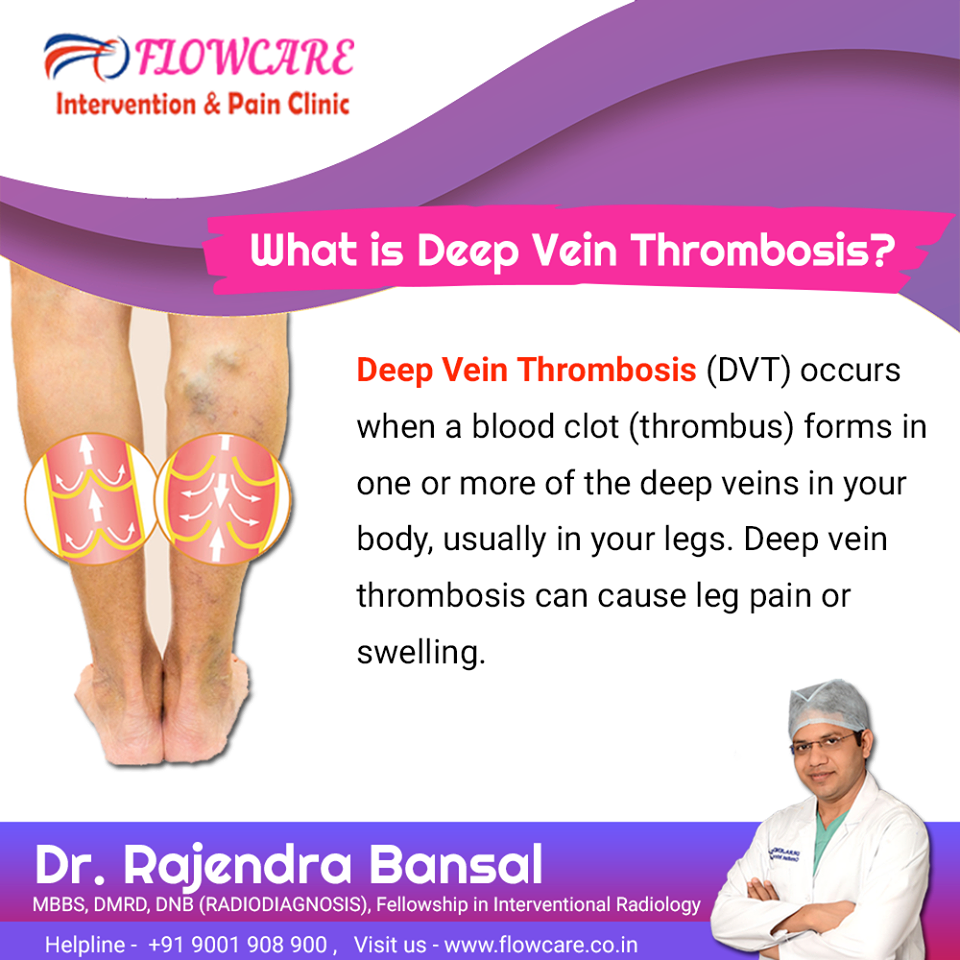
Aspirin does not provide a protective effect and may cause undesired gastrointestinal side effects.
Nizhnekamsk Central District Multidisciplinary Hospital
02/17/2020
To patch the damaged area as quickly as possible, this is the task set by the body in case of damage to blood vessels or bleeding, and blood clots – blood clots serve as patches.
The process of formation of blood clots is called thrombosis, but doctors call it more simply – thrombosis. We will talk about him in this issue with the cardiovascular surgeon Ruslan Fadisovich Shakirov.
– Ruslan Fadisovich, in simple terms, what is thrombosis?
Thrombosis is a blockage of blood vessels by blood clots, most often the veins of the lower extremities. Thrombosis of the veins of the lower extremities is divided into superficial and deep vein thrombosis, which is more dangerous.
The main cause of thrombosis of the veins of the lower extremities is stagnation in the blood, for example, during air travel, when a person travels in a car for a long time (more than two hours), non-transportable and bedridden people.
– How can an ordinary person assume that he has a thrombosis?
– These are the patient’s complaints, the main of which is a sharp swelling of the leg against the background of complete health, bursting pains in the calf muscles, with such symptoms a person should definitely consult a doctor. Most often, people wait 5-7 days, but this is a mistake, because deaths occur in the first days after thrombosis.
– What is the cause of blood clots?
– Thrombi is a multifactorial process, with age, risk factors for thrombosis increase, for example, cancer or after a stroke, after surgery on the first day, other categories of people with congenital blood disorders, that is, a person is predisposed to thrombosis from birth, as well as injuries and pregnancy may cause blood clots
– Bad habits can influence the appearance of the disease?
– Smoking does not affect the development of blood clots, but it affects the formation of atherosclerotic plaques in the arteries, which, ultimately, growing to a certain size, can provoke arterial thrombosis.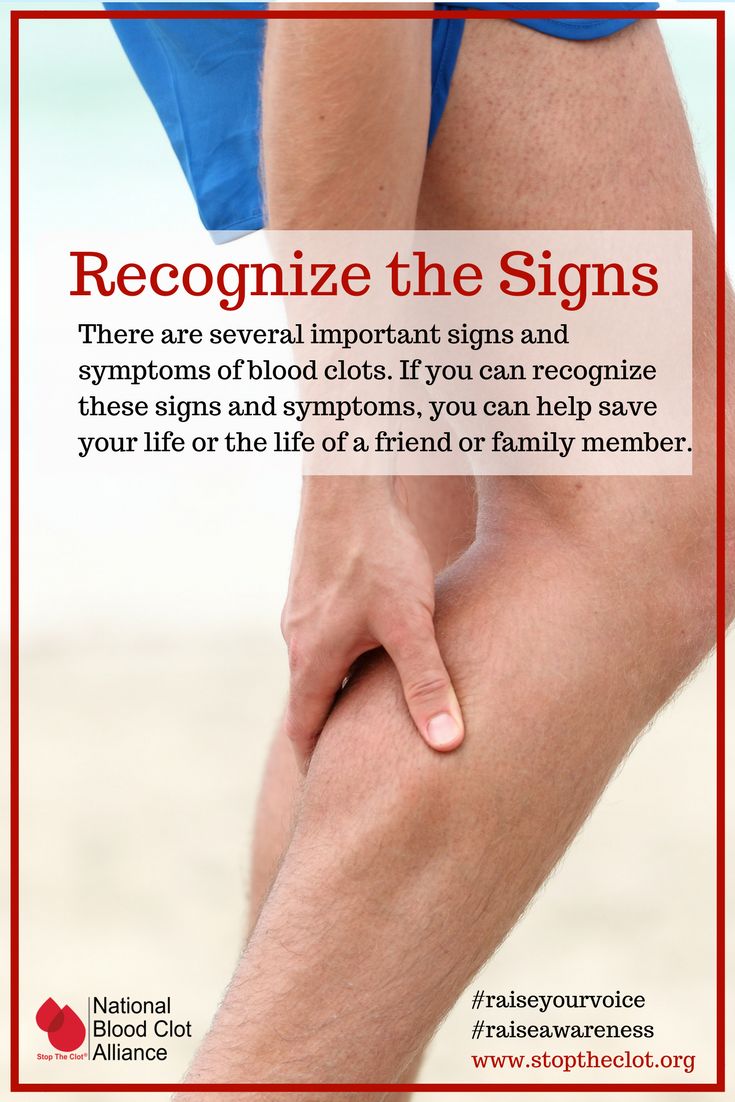 And taking alcohol the very next day can affect the development of thrombosis, especially if you combine a bath and alcohol. A person in a state of intoxication can fall asleep in an uncomfortable position, which can provoke thrombosis of the veins of the lower extremities. In order to protect yourself in the future, you need to know the signs of the disease. Deep vein thrombosis is considered more dangerous. The main complaint in deep vein thrombosis, I repeat, is leg edema against the background of complete health. When thrombosis is closer to the body, then there is swelling of the entire leg to the groin area, if thrombosis is up to the level of the knee, then only the lower leg swells, while it may be insignificant, but there will be bursting pain in the calf muscle. Thrombophlebitis of the superficial veins most often occurs against the background of varicose veins of the lower extremities, the main symptom of which is the appearance along the vein of a cord-like cord of bright red color and hot to the touch.
And taking alcohol the very next day can affect the development of thrombosis, especially if you combine a bath and alcohol. A person in a state of intoxication can fall asleep in an uncomfortable position, which can provoke thrombosis of the veins of the lower extremities. In order to protect yourself in the future, you need to know the signs of the disease. Deep vein thrombosis is considered more dangerous. The main complaint in deep vein thrombosis, I repeat, is leg edema against the background of complete health. When thrombosis is closer to the body, then there is swelling of the entire leg to the groin area, if thrombosis is up to the level of the knee, then only the lower leg swells, while it may be insignificant, but there will be bursting pain in the calf muscle. Thrombophlebitis of the superficial veins most often occurs against the background of varicose veins of the lower extremities, the main symptom of which is the appearance along the vein of a cord-like cord of bright red color and hot to the touch. In such cases, you should immediately go to the hospital.
In such cases, you should immediately go to the hospital.
– They say “a blood clot broke off”, what does this concept mean?
– When a “thrombus came off”, then we are talking about thromboembolic complications. And so that the blood clot does not come off, a person needs to come to the hospital on the first day after the appearance of the above signs. The patient cannot feel the thrombus “hanging” or not. To do this, you need to consult a doctor and conduct an ultrasound. People think that blood clots take years to build up. No, they do not accumulate, they appear suddenly and in a healthy state.
– How to determine that a blood clot has broken off?
– The first sign is a sharp feeling of lack of air, if thrombosis of small branches of the pulmonary arteries, then a dry cough begins there and without fever, and if large branches, then up to loss of consciousness and death. And therefore, you just need to see a doctor on time, even without an appointment, on weekdays to a therapist or surgeon, and on holidays or weekends to the emergency room or call an ambulance. Prevention of thrombosis is determined by doctors, the risk group includes people over 60 years of age, bedridden, postoperative, cancer patients, pregnant women and those with thrombophilia. Such patients, for the purpose of prevention, drink drugs and wear compression underwear.
Prevention of thrombosis is determined by doctors, the risk group includes people over 60 years of age, bedridden, postoperative, cancer patients, pregnant women and those with thrombophilia. Such patients, for the purpose of prevention, drink drugs and wear compression underwear.
– What are the statistics in the city?
– For a month, on average, 4-5 people with newly diagnosed diagnoses apply, and on average, according to statistics, 60-70 people per 100,000 people under 60 years old, and after this age, the risk of thrombosis increases to 200 people per 100,000 population per year.
– What advice would you give readers?
– In order to reduce the risk of blood clots, you need to move more – walking is always more beneficial than sitting, standing or lying down, and you need to drink more water. If there is a burdened family history of thrombosis and a person at risk, you can wear compression stockings, go swimming, take a contrast shower, but it is better to consult a doctor first.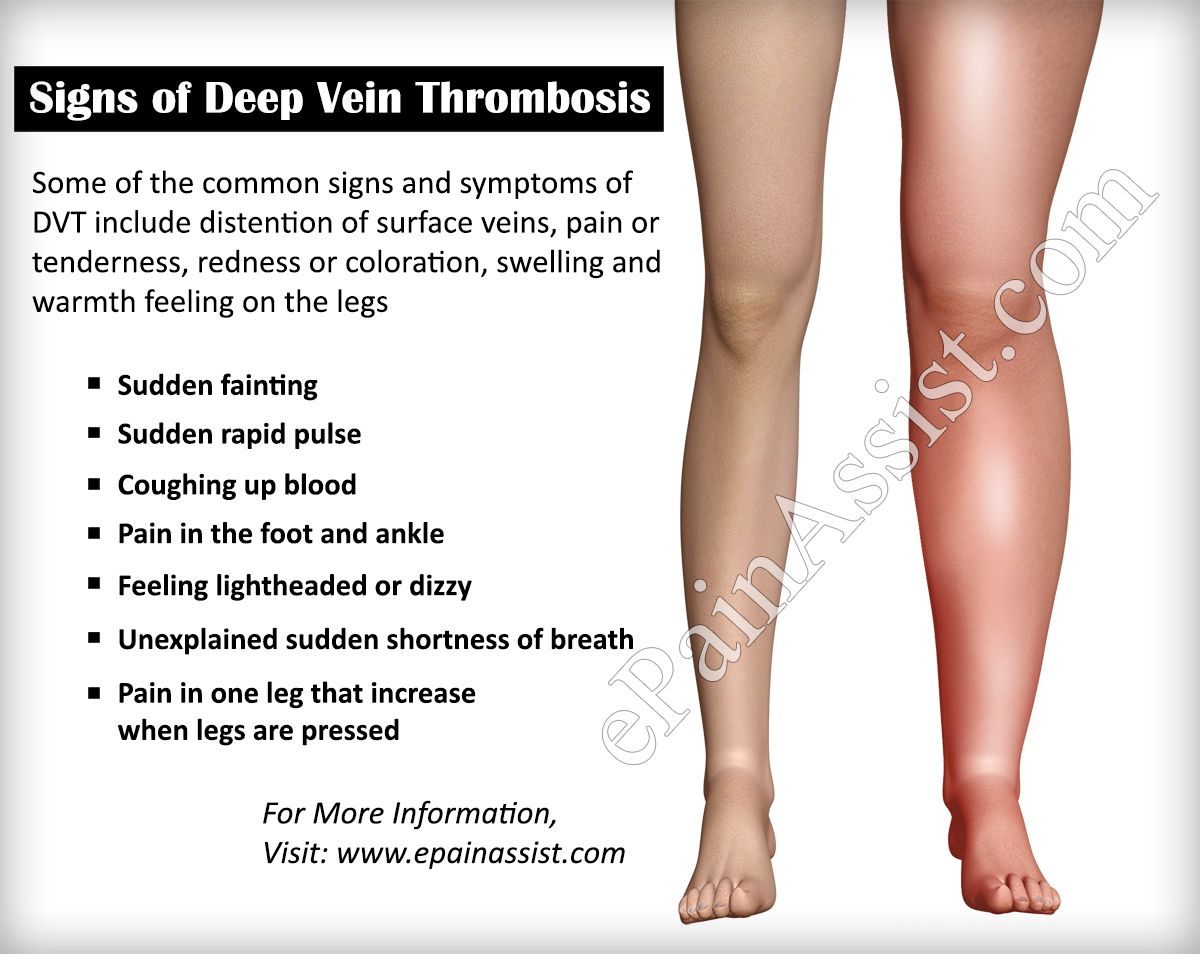
According to the materials of the newspaper “World Bulletin”, author Lilia Chebysheva.
Thrombosis
Venous thrombosis is a serious disease characterized by the formation of a blood clot, or thrombus, in the lumen of a vein.
A thrombus formed in the lumen of a vein can completely stop the circulation of blood through it.
Breaking away from the wall of a vein, a clot can enter the heart and further into other vessels, which in turn can cause serious complications.
If a blood clot from the heart enters the vessels of the lungs, a pulmonary embolism (blockage of the lumen of the pulmonary artery) will develop, the consequences of which may be sudden death or necrosis of a large part of the lung.
If a blood clot enters the vessels of the brain, a stroke will develop, which can also lead to death or disability./2549387-article-causes-of-calf-pain-5a70fb720e23d90036a5fa54.png)
Symptoms and signs of vein thrombosis may differ depending on the vein in which the thrombus has formed. Depending on the location of the thrombus, there are: deep vein thrombosis of the lower extremities (the most common form of thrombosis), ileofemoral thrombosis (thrombus in the femoral or iliac vein), mesenteric vein thrombosis, portal vein thrombosis, retinal vein thrombosis, etc.
Why does vein thrombosis develop?
There are several main causes of blood clots in the veins:
Lack of movement in the legs for more than 3 days (eg after major surgery, in paralyzed people, etc.) significantly increases the risk of blood clots in the deep veins of the legs.
Dehydration of the body leads to an increase in blood viscosity and slowing down its movement in the vessels and increases the likelihood of blood clots in the veins. Causes of dehydration can include: reduced fluid intake in hot weather, extensive burns, infectious diseases, etc.

Operations on the veins of the legs can provoke the formation of blood clots, however, in most cases they are so small that they resolve themselves without causing serious consequences.
Disorders in the blood coagulation system can be congenital (exist from birth) or acquired (against the background of oncological, infectious diseases, etc.)
Serious injuries can lead to blood clots in the veins in the injured area.
In order to prevent the development of vein thrombosis, doctors identify the presence of so-called risk factors that contribute to the formation of blood clots. In the presence of several of these risk factors, the patient is prescribed drugs that prevent the development of thrombosis. Here are some risk factors for thrombosis:
- Age over 75
- Obesity and overweight
- Presence of oncological (cancerous) diseases
- Absence of movement in the legs for more than 3 days, or long flights, car trips, etc.

- Condition after surgery
- Past venous thrombosis
- Major burns and injuries, bone fractures
- Pregnancy and recent childbirth
Sepsis (blood poisoning)
Diseases of the cardiovascular system: myocardial infarction, angina pectoris, heart failure, etc.
Symptoms and signs of thrombosis
Thrombi can be located in both deep and superficial veins. If the thrombus is located in the deep veins of the legs, then pain first appears, then swelling of the lower limb. With thrombosis of superficial veins, painful seals and redness of this area appear on the skin.
The most dangerous consequence of thrombosis can be the movement of a thrombus with the blood flow – embolism, which most often settles in the lungs, leading to hemorrhagic pulmonary infarction.
Deep vein thrombosis of the legs can occur with little to no symptoms or subtle signs. Here are some of them:
- Swelling of the lower third of the leg is the most common symptom of deep vein thrombosis of the lower leg.
 If thrombosis extends to higher parts of the leg (veins of the thigh and pelvis), then the swelling can capture the entire leg, or both legs. There is pain in the groin area.
If thrombosis extends to higher parts of the leg (veins of the thigh and pelvis), then the swelling can capture the entire leg, or both legs. There is pain in the groin area. - Pain in the calf muscles is an intermittent symptom of deep vein thrombosis and may be absent in half of the cases. Pain in the calf muscle increases with flexion of the foot in the ankle joint. In the presence of such pain in combination with edema, you should immediately consult a doctor.
- Increased sensitivity of the skin of the leg.
- The skin in the area of the clot may be warmer and redder than the surrounding areas.
- In cases where deep vein thrombosis is asymptomatic, it can only be detected with the development of complications – for example, pulmonary embolism, which is manifested by the sudden onset of shortness of breath, a feeling of lack of air, dizziness, up to loss of consciousness. With the development of these symptoms, you should immediately call an ambulance.

Diagnostics of vein thrombosis
The diagnosis cannot be definitively established on the basis of symptoms of thrombosis alone. This requires an additional examination. In the diagnosis of deep vein thrombosis, the following examination methods are used:
- Determination of the level of D-dimer in the blood, a special substance whose level remains elevated for a week after the onset of acute venous thrombosis.
- Ultrasound of the veins allows you to quickly and painlessly detect signs of blockage in the vein. A special type of ultrasound – duplex scanning allows you to see a blood clot in the lumen of a vein.
- Phlebography (venography) is the most informative method for diagnosing deep vein thrombosis, ileofemoral thrombosis, etc. For phlebography, a special contrast agent is injected into a vein on the dorsum of the foot, which allows you to view the veins during x-rays of the leg.


 The incidence of deep venous thrombosis after arthroscopic knee surgery. Am J Sports Med 1999;27(6):707–10.
The incidence of deep venous thrombosis after arthroscopic knee surgery. Am J Sports Med 1999;27(6):707–10. Nonaisle seats may increase risk due to limitation of movement.
Nonaisle seats may increase risk due to limitation of movement.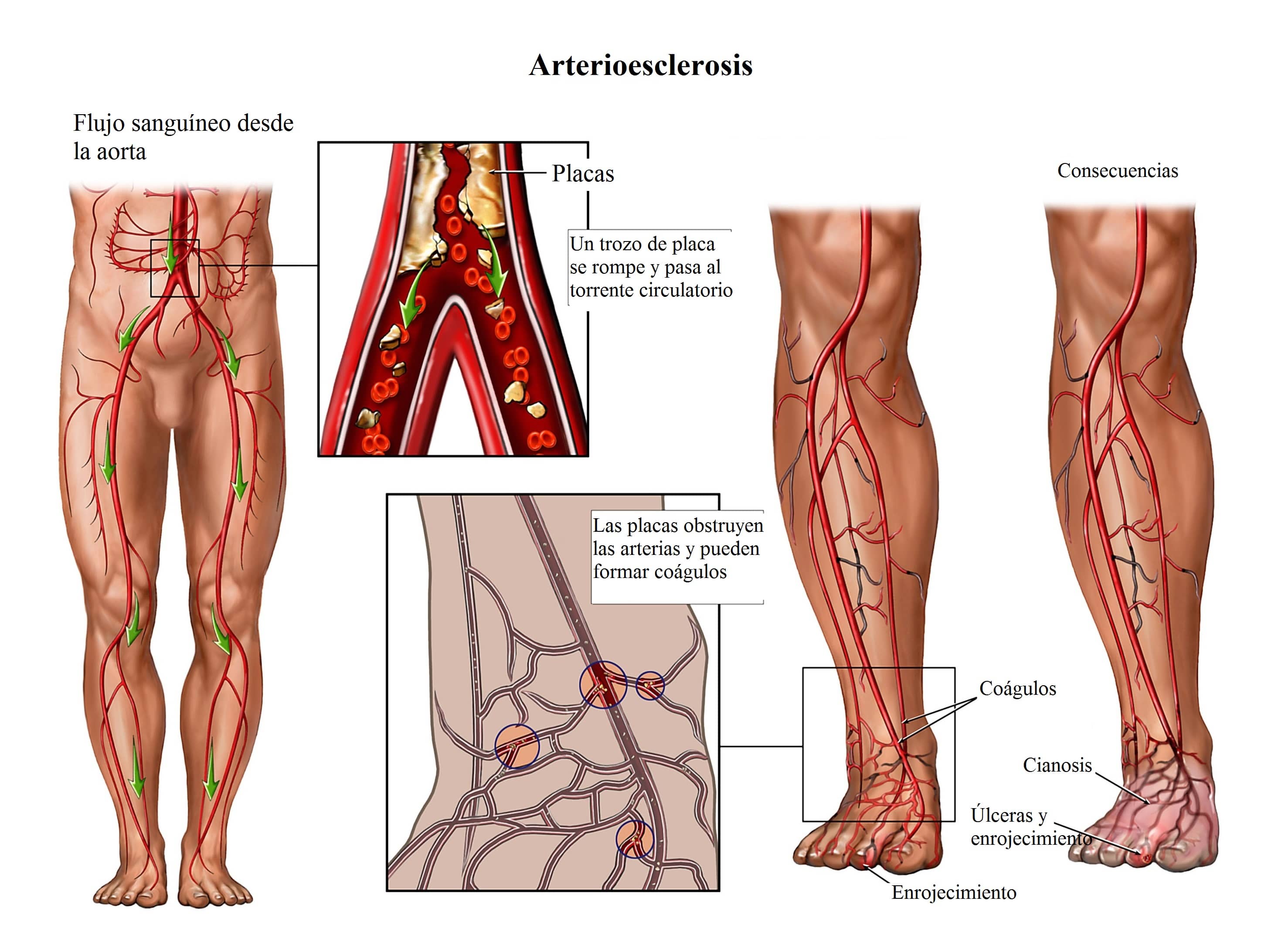 9 m [> 6.2 ft ] or < 1.6 m [< 5.2 ft])
9 m [> 6.2 ft ] or < 1.6 m [< 5.2 ft])


 If thrombosis extends to higher parts of the leg (veins of the thigh and pelvis), then the swelling can capture the entire leg, or both legs. There is pain in the groin area.
If thrombosis extends to higher parts of the leg (veins of the thigh and pelvis), then the swelling can capture the entire leg, or both legs. There is pain in the groin area.